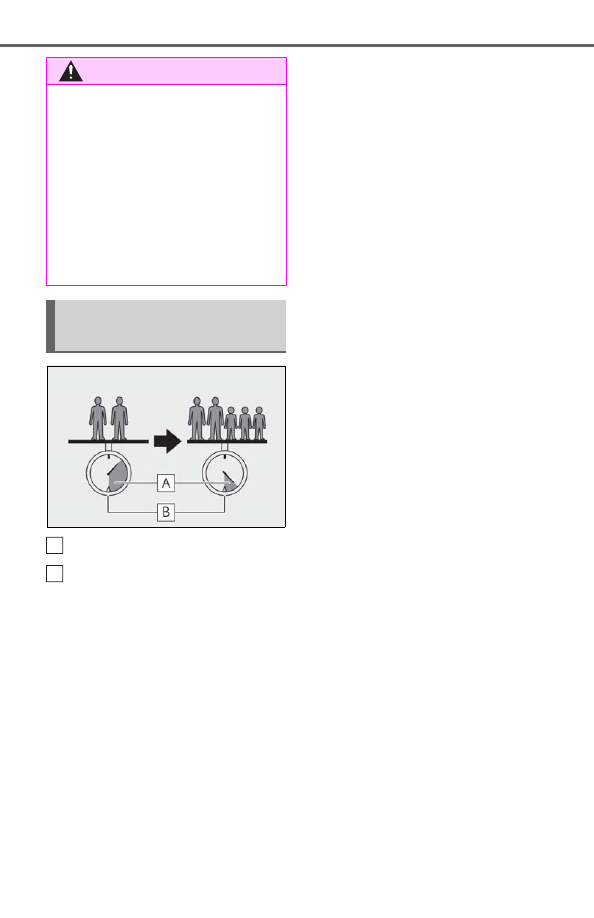LEXUS ES 350 (2019 year). Instruction - part 9

134
4-1. Before driving
Cargo capacity
Total load capacity (vehicle capac-
ity weight) (
When 2 people with the combined
weight of A lb. (kg) are riding in your
vehicle, which has a total load capacity
(vehicle capacity weight) of B lb. (kg),
the available amount of cargo and lug-
gage load capacity will be C lb. (kg) as
follows:
B
*2
lb. (kg) - A
*1
lb. (kg) = C
*3
lb. (kg)
*1
: A = Weight of people
*2
: B = Total load capacity
*3
: C = Available cargo and luggage load
In this condition, if 3 more passengers with
the combined weight of D lb. (kg) get on,
the available cargo and luggage load will
be reduced E lb. (kg) as follows:
C lb. (kg) - D
*4
lb. (kg) = E
*5
lb. (kg)
*4
: D = Additional weight of people
*5
: E = Available cargo and luggage load
As shown in the example above, if the
number of occupants increases, the
cargo and luggage load will be
reduced by an amount that equals the
increased weight due to the additional
occupants. In other words, if an
increase in the number of occupants
causes an excess of the total load
capacity (combined weight of occu-
pants plus cargo and luggage load),
you must reduce the cargo and lug-
gage on your vehicle.
WARNING
■
Capacity and distribution
●
Do not exceed the maximum axle
weight rating or the total vehicle
weight rating.
●
Even if the total load of occupant’s
weight and the cargo load is less than
the total load capacity, do not apply the
load unevenly. Improper loading may
cause deterioration of steering or
braking control which may cause
death or serious injury.
Calculation formula for your
vehicle
A
B